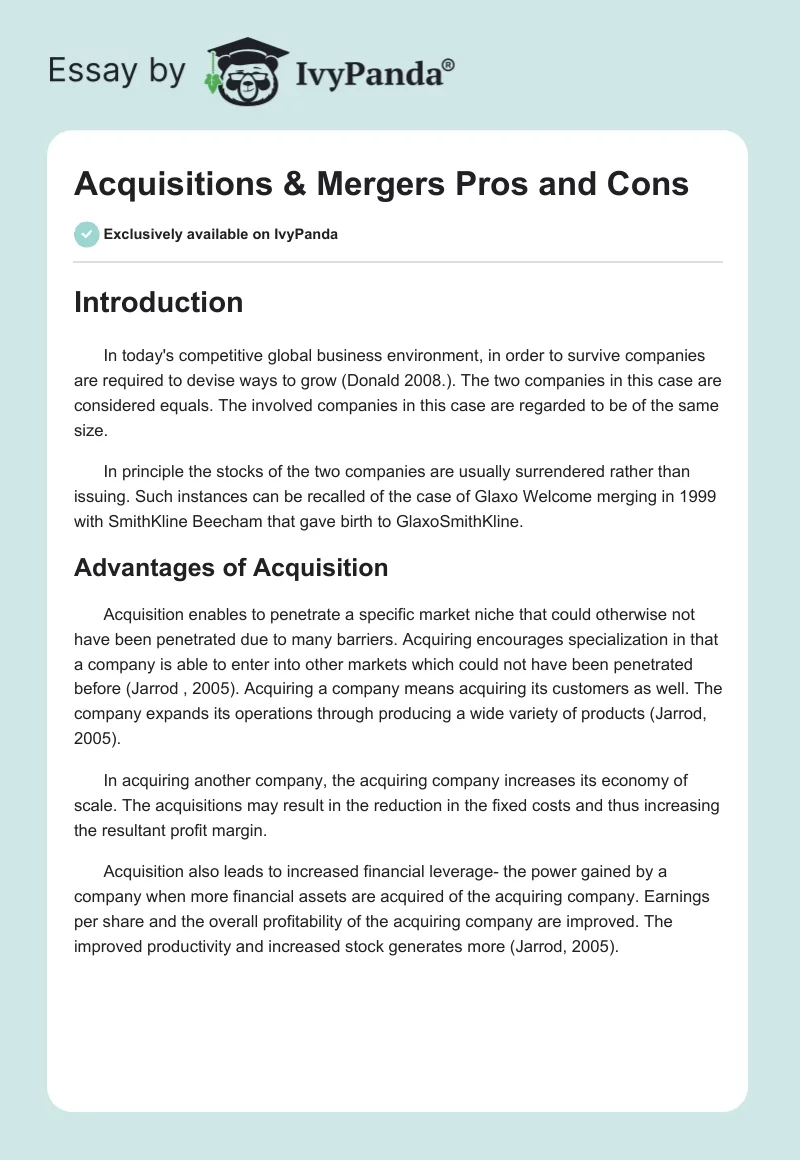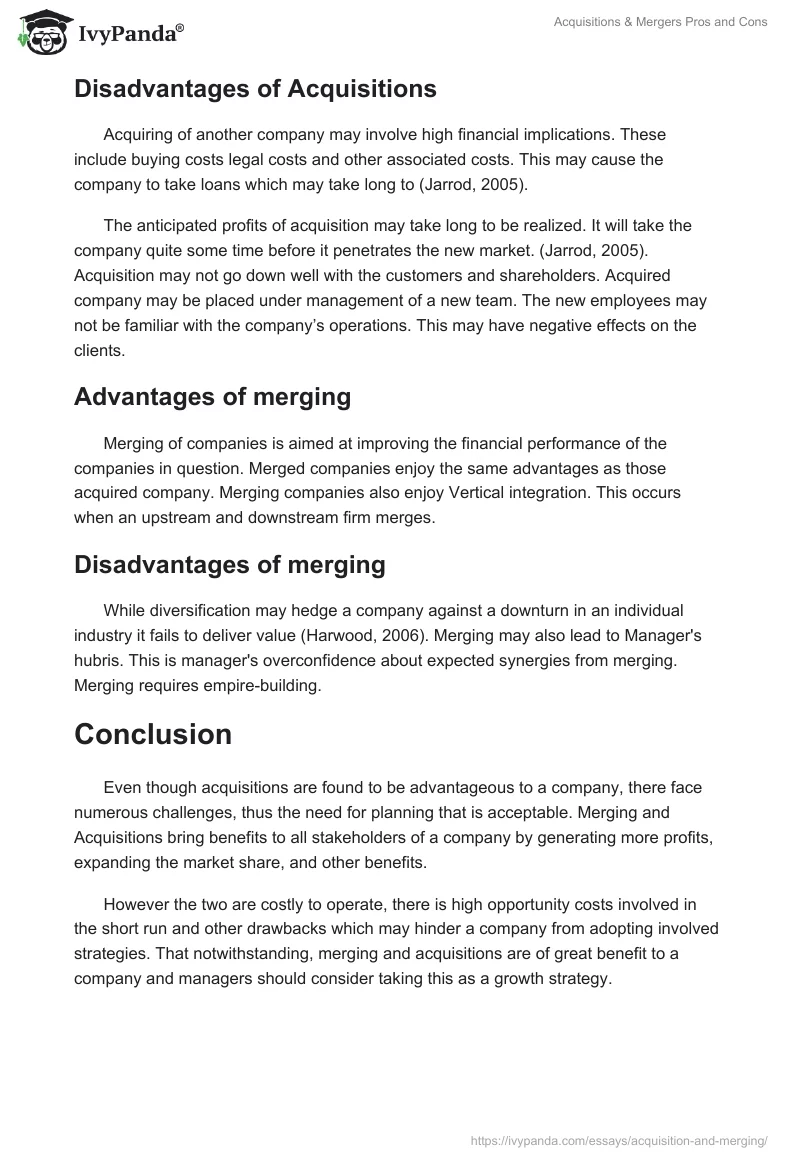Introduction
In today’s competitive global business environment, in order to survive companies are required to devise ways to grow (Donald 2008.). The two companies in this case are considered equals. The involved companies in this case are regarded to be of the same size.
In principle the stocks of the two companies are usually surrendered rather than issuing. Such instances can be recalled of the case of Glaxo Welcome merging in 1999 with SmithKline Beecham that gave birth to GlaxoSmithKline.
Advantages of Acquisition
Acquisition enables to penetrate a specific market niche that could otherwise not have been penetrated due to many barriers. Acquiring encourages specialization in that a company is able to enter into other markets which could not have been penetrated before (Jarrod , 2005). Acquiring a company means acquiring its customers as well. The company expands its operations through producing a wide variety of products (Jarrod, 2005).
In acquiring another company, the acquiring company increases its economy of scale. The acquisitions may result in the reduction in the fixed costs and thus increasing the resultant profit margin.
Acquisition also leads to increased financial leverage- the power gained by a company when more financial assets are acquired of the acquiring company. Earnings per share and the overall profitability of the acquiring company are improved. The improved productivity and increased stock generates more (Jarrod, 2005).
Disadvantages of Acquisitions
Acquiring of another company may involve high financial implications. These include buying costs legal costs and other associated costs. This may cause the company to take loans which may take long to (Jarrod, 2005).
The anticipated profits of acquisition may take long to be realized. It will take the company quite some time before it penetrates the new market. (Jarrod, 2005). Acquisition may not go down well with the customers and shareholders. Acquired company may be placed under management of a new team. The new employees may not be familiar with the company’s operations. This may have negative effects on the clients.
Advantages of merging
Merging of companies is aimed at improving the financial performance of the companies in question. Merged companies enjoy the same advantages as those acquired company. Merging companies also enjoy Vertical integration. This occurs when an upstream and downstream firm merges.
Disadvantages of merging
While diversification may hedge a company against a downturn in an individual industry it fails to deliver value (Harwood, 2006). Merging may also lead to Manager’s hubris. This is manager’s overconfidence about expected synergies from merging. Merging requires empire-building.
Conclusion
Even though acquisitions are found to be advantageous to a company, there face numerous challenges, thus the need for planning that is acceptable. Merging and Acquisitions bring benefits to all stakeholders of a company by generating more profits, expanding the market share, and other benefits.
However the two are costly to operate, there is high opportunity costs involved in the short run and other drawbacks which may hinder a company from adopting involved strategies. That notwithstanding, merging and acquisitions are of great benefit to a company and managers should consider taking this as a growth strategy.
Reference
Donald, DePamphilis (2008). Mergers, Acquisitions, and Other Restructuring Activities. New York: Elsevier, Academic Press. pp.740.
Harwood, I. A. (2006). “Confidentiality constraints within mergers and acquisitions: gaining insights through a ‘bubble’ metaphor”. British Journal of Management 17 (4): 347–359.
Jarrod M., Coulhard, M., and Lange, P. (2005). Planning for a successful merger: A lesson form an Australian case study.’ Journal of Global Business and Technology, 1(2).


